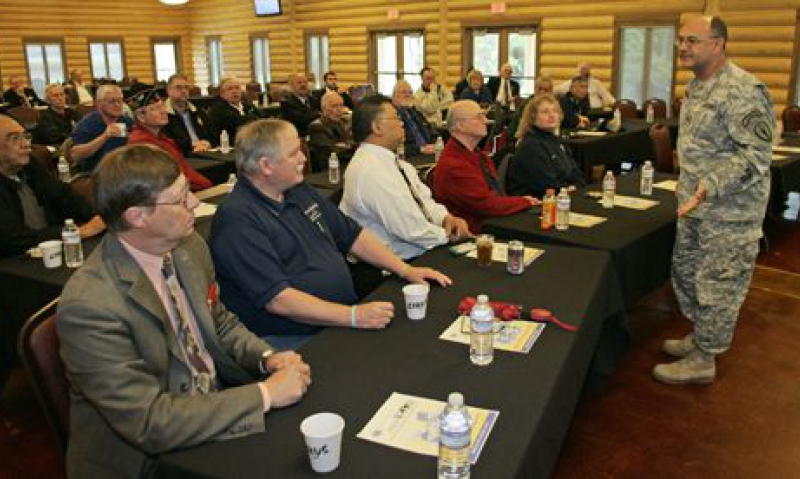
As far as the media are concerned, good news about America’s work in Iraq is bad news.
In most cases, the media do not contrive the stories they report. Iraq, after all, is scarred by car bombings, chaos and killings. But major media outlets do seem to depict U.S. efforts in Iraq in the very worst light, emphasizing certain facts, stretching some and burying others. The result is a distorted picture.
For example, when a British journal guessed that 655,000 Iraqi civilians had been killed since 2003, the press dutifully made that the headline and buried or simply didn’t report the study’s serious flaws. Even Iraq Body Count, an antiwar group that estimates 78,000 civilian deaths, expressed “considerable cause for skepticism.”
The Wall Street Journal’s James Taranto reminds us that 20 percent of U.S. deaths in Iraq is from non-hostile causes. Some don’t even happen in Iraq. Two U.S. sailors added to the list of those killed in Iraq were actually killed in Bahrain during “a non-combat related incident” by a fellow serviceman. But that didn’t appear in the nightly news or morning paper.
Neither did some significant items from retired Lt. Gen. Ricardo Sanchez’s speech to members of the Pentagon press corps. While half of the speech was a harsh critique of the war, the other half was a devastating indictment of the media. Sanchez upbraided the press for “perpetuating the corrosive partisan politics that is destroying our country and killing our servicemembers who are at war.” Yet, the major press outlets only reported that Sanchez’s description of Iraq as a “nightmare.”
Thanks to the troop surge, that nightmare may be ending. But as the surge stabilized central Iraq, McClatchy Newspapers actually ran a story bemoaning the sharp drop in burials at Iraq’s largest cemetery. In other words, even good news is bad news. But good news is no news, too. To his credit, The Washington Post’s Howard Kurtz criticized the media’s silence on the positive post-surge developments, noting that when the Pentagon released a string of good news in late 2007 “the media paid little attention.” If casualties were going up, he concluded, “That would have made some front pages.”
Indeed, it pays to recall that in 2006, when CNN received video of snipers killing U.S. troops – video from “intermediaries” connected to the insurgency – it was broadcast for an international audience. Ever concerned about Pentagon manipulation, CNN’s producers apparently didn’t contemplate the propaganda coup they delivered for America’s enemies.
According to the Media Research Center (MRC), “three-fifths of all CNN stories on the war emphasized setbacks, misdeeds or pessimism about progress in Iraq.” Another MRC study reveals that in one nine-month period, there were four negative stories about Iraq for every positive story on ABC, NBC or CBS. In that same period, MRC found only eight stories devoted to heroism and 79 stories “focused on allegations of combat mistakes or outright misconduct.”
A case in point was the media’s consensus conclusion that U.S. troops had perpetrated a “Haditha Massacre,” without according the accused even a fraction of the objectivity reserved for terrorists. Recall the Orwellian decision by Reuters not to label as “terrorists” people who engage in terrorism.
Sadly, some media outlets actually have contrived the stories they report. Consider The New Republic, which published an anonymous soldier’s tales of U.S. brutality and depravity. Spurred by The Weekly Standard’s Michael Goldfarb, bloggers found so many holes in the dispatches that the author ultimately recanted his claims in a sworn statement.
Indeed, Americans are catching on. According to an NBC News/Wall Street Journal poll, 60 percent of citizens are unsure about the media’s Iraq reporting or believe it is inaccurate.
Perhaps the saddest aspect of all the questionable news and bad news is that there is good news to report.
The American Enterprise Institute’s Frederick Kagan highlights the inspiring post-surge successes: car-bombing deaths down by 81 percent, casualties down 77 percent, terrorist operations down 59 percent, the most peaceful Ramadan in three years.
And there’s more: • Some 3,400 schools have been rehabilitated since 2003, with 809 new schools under construction. About 324,000 more students will have classrooms. • The coalition is building 142 primary health-care centers, to serve 6 million Iraqis.• Iraq’s GDP was $25.7 billion in 2004, grew to $48 billion in 2006, and hit $61 billion in 2007.• The London Telegraph recently tracked the coalition’s stunning success in Anbar province, where the allies have crushed al-Qaeda. Noting that coalition patrols “are hailed with cries of salaam (peace) and habibi (friend),” The Telegraph devoted a series to Anbar’s amazing turnaround.
As Feisal Istrabadi, a former Iraqi diplomat, observed in The American Legion Magazine, “When you’re in Iraq, it’s very easy to be quite optimistic about the future. It’s when you leave Iraq and all you know about what’s happening is what you read in the press that you become pessimistic.”
- Landing Zone

